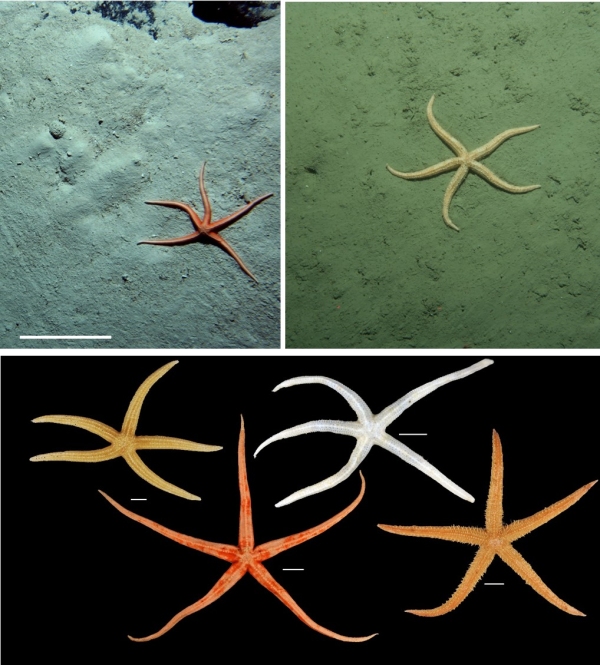We hope this Week’s Critter of the Week will brighten your day, introducing the genus of sea stars called Zoroaster.
First described in 1873 by Wyville Thomson, Zoroaster are a widespread genus with seven species recorded from NZ. Four of these are endemic and include, as yet, one un-named species.
Sometimes Zoroaster are referred to as rattail stars – presumably because of similarities between their long arms and the tails of rattail fishes (also known as Grenadiers). They are mostly deepwater species occurring in New Zealand waters down to depths of almost 2000m. The members of this genus are quite distinctive in sea bed images, having very small discs in comparison to their long, tapering arms.
It isn’t clear why Wyville Thomson chose the name Zoroaster for this genus, this name usually refers to the prophet and founder of the Zoroastrianism who died in Iran c. 3500 years ago (1). Fun fact: Fossil specimens of Zoroaster have been found – see Chris Mah’s interesting blog here: http://echinoblog.blogspot.co.nz/2008/05/fossil-starfish-story-deep-sea.html References:
1) BBC – Religions – Zoroastrian: Zoroaster’s vision:
http://www.bbc.co.uk/religion/religions/zoroastrian/history/zoroaster_1.shtml

